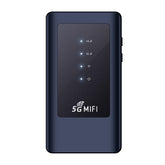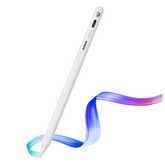In the ever-evolving landscape of education, technology has become a key driver of innovation. With the rise of smart classrooms, educators and students are leveraging digital tools to create more interactive and engaging learning environments. One such tool that is making waves is the Android Box. Let's explore the importance of Android Box in smart classes and how it is transforming the way we teach and learn.
1. Enhanced Accessibility and Affordability
One of the major benefits of using an Android Box in smart classes is its affordability. Compared to expensive smart TVs or advanced projectors, an Android Box is a cost-effective solution that transforms a regular TV or monitor into a smart device. This feature makes it accessible for educational institutions of all sizes, from large universities to smaller schools.
Moreover, Android Boxes are easy to install and do not require high-end technical support. With a stable internet connection, educators can immediately start utilizing various apps, streaming platforms, and educational content right on the screen. This affordability makes digital learning tools more widespread and available to students in rural or less privileged areas, bridging the digital divide.
2. Access to a Wide Range of Educational Apps
An Android Box provides access to Google Play Store, where a vast array of educational apps can be downloaded. From interactive math apps to language learning tools, these apps offer dynamic ways for students to grasp complex subjects. Teachers can use apps like Google Classroom, Khan Academy, or BYJU'S to conduct lessons more efficiently, catering to different learning styles.
These apps often come with multimedia elements such as videos, quizzes, and games, making learning more engaging and fun for students, especially in subjects that are often considered challenging.
3. Interactive Learning Experience
Smart classrooms aim to make learning more interactive. An Android Box can convert any regular screen into an interactive hub by allowing educators to integrate multimedia tools, videos, presentations, and even virtual reality content. The visual and interactive elements foster better understanding and retention among students compared to traditional textbook-based learning.
For example, teachers can play educational videos directly from platforms like YouTube or Edmodo, pause to discuss key concepts, and even run real-time quizzes. This level of interaction helps students stay engaged and makes lessons far more stimulating.
4. Flexible and Customizable Learning Environment
With the Android Box, teachers have the flexibility to customize their lessons. There’s no need to rely solely on pre-set lesson plans or textbooks. Educators can instantly access online resources, and lesson plans, and adapt content based on students’ understanding in real time.
Moreover, Android Boxes support a variety of formats like PDFs, PowerPoint presentations, and video files, making it easier for teachers to design multi-faceted lessons. They can easily switch between materials, demonstrating their adaptability and encouraging more active participation from students.
5. Seamless Streaming and Connectivity
The Android Box supports Wi-Fi and Bluetooth connectivity, making it easy to connect other devices like tablets, smartphones, and laptops. Teachers can stream live sessions, share their screens, and even invite guest speakers from anywhere in the world via video conferencing apps like Zoom or Google Meet.
In addition, an Android Box allows the seamless integration of cloud-based platforms. This means students and teachers can store, access, and share materials in real time, which enhances the collaborative nature of learning. No more shuffling through physical papers or waiting for the next class to clarify doubts—students can participate in discussions or upload assignments from home.
6. Cost-Effective Solution for Upgrading Traditional Classrooms
Many schools that have already invested in projectors or TVs can upgrade their classrooms into smart classrooms without a complete overhaul of their existing infrastructure. Simply plugging in an Android Box to the available TV or projector can bring in the benefits of a smart classroom, making it an excellent cost-saving solution.
7. Offline Mode for Continuity of Learning
Even in areas with limited or unstable internet connections, many Android Boxes come with offline capabilities. Teachers can pre-download educational content and play it during the lesson without relying on a live connection. This ensures that learning is uninterrupted, even if there are technical difficulties.
Conclusion
The Android Box has become an essential tool in the creation of smart classes, offering an affordable, flexible, and highly interactive learning solution. It opens up endless possibilities by transforming traditional classrooms into dynamic, tech-driven environments where both teachers and students can thrive. Whether you're a small institution looking to embrace digital learning or a large university aiming to scale your smart classroom infrastructure, the Android Box is a game-changer that’s here to stay.
By integrating this versatile technology, educational institutions can ensure that learning is not only more engaging but also accessible to all, paving the way for a future where every classroom is a smart classroom.
Ready to take your teaching to the next level with the Android Box? Enhance engagement, simplify lesson plans, and create a cutting-edge smart classroom with this powerful tool.
Visit www.ausha.co.in or call us at 9873742793 to explore the latest Android Box solutions and empower your students with the future of education! Don’t miss out—start your transformation now!











